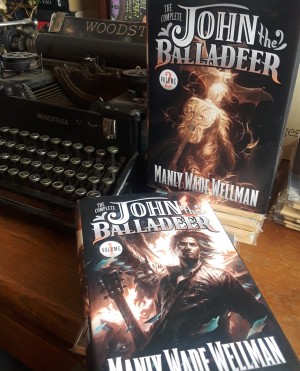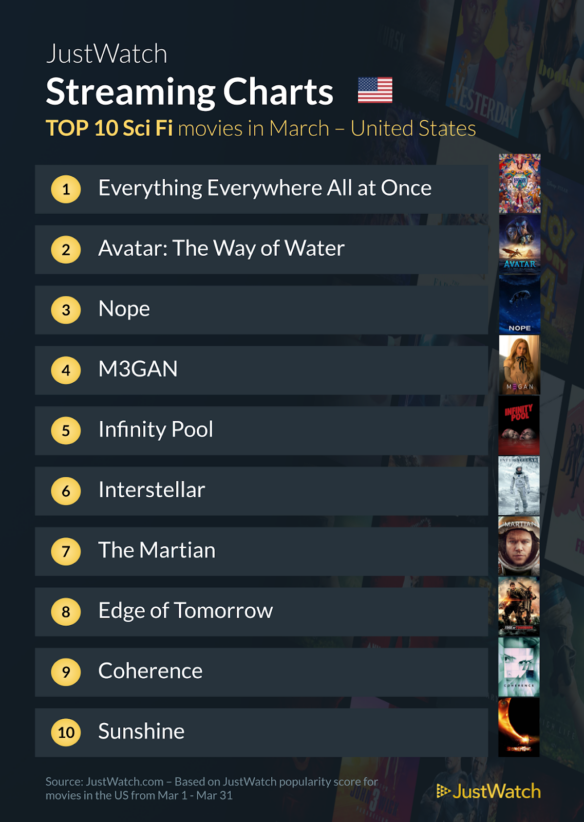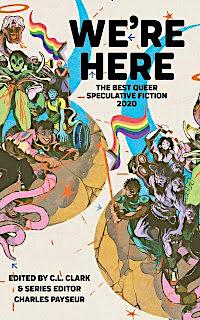(1) SANDERSON ADDRESSES WIRED INTERVIEW. [Item by Dann.] Brandon Sanderson yesterday posted a piece on his blog in response to part of the recent story about him published by Jason Kehe in WIRED Magazine: “Outside”. While Sanderson’s other reactions have been notably muted, he found one aspect of Kehe’s story to be worthy of response.
Sanderson had shared his personal condition of not experiencing emotions in the same way that most other people do. The conversation about emotions seemed off and he asked Kehe to exclude that from his piece.
…My neurodivergence came up in a recent interview I did. The interviewer latched onto the fact that I don’t feel pain like others do. (More accurately, some mild pains don’t cause in me the same response they do others.) I asked the interviewer not to mention it in his article, as I felt the tone to our discussion was wrong. I worry about my oddity changing the way people think of me, as I don’t want to be seen as an emotionless zombie. So I try to speak of it with nuance….
Sadly, Kehe did not honor that request.
Having had an aspect of himself laid bare, Sanderson opted to do what many writers do when feeling a need to work through something. He wrote about himself. What makes him the type of writer that he is. What makes him the type of person that he is.
…This is why I write. To understand. To make people feel seen. I type away, hoping some lonely reader out there, left on a curb, will pick up one of my books. And in so doing learn that even if there is no place for them elsewhere, I will make one for them between these pages….
And this is why I read. When I’m not standing outside, looking up at the falling snow.
(2) START TWANGING. Stephen Haffner’s latest Newsletter announces that The Complete John The Balladeer by Manly Wade Wellman is at the printer and they expect to begin shipping the initial preorders on May 15.
The two-volume set, amounting to 1152 pages, includes all 19 short stories, all 5 novels, and Wellman’s synopsis for the unwritten 6th novel: The Valley So Low.

(3) IN CASE YOU HAVEN’T ALREADY SHIFTED YOUR PARADIGM. “Women now dominate the book business. Why there and not other creative industries?” NPR’s “Planet Money” program looked into the question.
…One of the first projects the Copyright Office had Waldfogel work on was a data analysis of the evolution of women in copyright authorship. Looking at the numbers, Waldfogel’s eyes opened wide when he realized that women have seen incredible progress in book authorship but continue to lag in other creative realms.
For example, while they have made inroads in recent years, women still accounted for less than 20 percent of movie directors and less than 10 percent of cinematographers in the top 250 films made in 2022. Likewise, when looking at the data on patents for new inventions, women make up only between 10 to 15 percent of inventors in the US in a typical year.
For a long time, the book market saw a similar disparity between men and women. Sure, some rockstar female authors come to mind from back in the day: Jane Austen, Mary Shelley, Emily Dickinson, Agatha Christie, Zora Neale Hurston — to name just a few prominent ones. But, Waldfogel says, between roughly 1800 and 1900, the share of female authors hovered around only 10 percent each year.
In the 20th century, female authorship began to slowly pick up. By the late 1960s, the annual percentage of female authors had grown to almost 20 percent.
Then, around 1970, female authorship really began to explode. “There was a sea change after 1970,” Waldfogel says.
By 2020, Waldfogel finds, women were writing the majority of all new books, fiction and nonfiction, each year in the United States. And women weren’t just becoming more prolific than men by this point: they were also becoming more successful. Waldfogel analyzes data from a whole range of sources to come to this conclusion, including the Library of Congress, the U.S. Copyright Office, Amazon, and Goodreads. Waldfogel finds that the average female-authored book now sees greater sales, readership, and other metrics of engagement than the average book penned by a male author….
(4) BEST SF THEN AND NOW. [Item by SF Concatenation’s Jonathan Cowie.] Which SF books do SF fans consider the best? And which SF books did SF fans consider the best? SF2 Concatenation has tweeted an advance post ahead of its next seasonal edition, “Best Science Fiction Novels”, an article comparing SF fans’ choices both today (2022) and back in 1987.
One survey was taken at the UK Eastercon back in 1987 by SF2 Concatenation.The other is a survey of over a thousand followers of the Media Death Cult YouTube Channel taken last year (2022).
Are the choices then and now different or the same? Do some of the same titles appear in both….?
… Before we go any further, it should be pointed out that the two surveys did not poll exactly the same question. The 1987 SF² Concatenation survey was a desert asteroid poll with participants asked which SF novels would they wish to be castaway with on a desert asteroid. This is not a point pedantry. Some may view classics such as – and here I invent wildly – as H. G. Wells’ The Time Machine as being so well read by fans and perhaps dated that they would not select it as one of their ten to be marooned with for goodness knows how long. So, a classic, best SF novel might not be one of a few that you would be marooned with for life.
As for the results, you need to be aware of arguably wild cards. The eagle-eyed among you will have noticed Pavane coming in at number 16 on the 1987 SF² Concatenation survey results. Could this be that its author’s status that Easter, Keith Roberts, being a Guest of Honour at the 1987 BECCON Eastercon, influenced matters?
On the Media Death Cult front, you need to be aware that a number of the titles had been mentioned a few times on the YouTube channel the previous years. For example, Leviathan Wakes is part of the ‘Expanse’ series of novels and the first few of these had been reviewed on the Channel and the Expanse television show has been mentioned in a number of the Cult’s TV-related videos. Was this an influence? Nobody knows, but it is worth being aware that such potential biases exist….
(5) REVISIONISM. “As Classic Novels Get Revised for Today’s Readers, a Debate About Where to Draw the Line” – and the New York Times takes notes.
…While some changes have been made to books published in decades past, often with little fanfare, many of the current attempts to remove offensive language are systematic and have drawn intense public scrutiny. The effort has left publishers and literary estates grappling with how to preserve an author’s original intent while ensuring that their work continues to resonate — and sell.
Finding the right balance is a delicate act: part business decision, part artful conjuring of the worldview of an author from another era in order to adapt it to the present.
“My great-grandmother would not have wanted to offend anyone,” said James Prichard, Christie’s great-grandson, and the chairman and chief executive of Agatha Christie Ltd. “I don’t believe we need to leave what I would term offensive language in our books, because frankly all I care about is that people can enjoy Agatha Christie stories forever.”
The financial and cultural stakes of the exercise are enormous. Authors like Dahl, Christie and Fleming have, together, sold billions of copies of books, and their novels have spawned lucrative film franchises. In 2021, Netflix bought the Roald Dahl Story Company, including rights for classics such as “The BFG,” for a reported $1 billion. Leaving the works unchanged, with offensive and sometimes blatantly racist phrases throughout, could alienate new audiences and damage an author’s reputation and legacy.
But altering a text carries its own risks. Critics say editing books posthumously is an affront to authors’ creative autonomy and can amount to censorship, and that even a well intentioned effort to weed out bigotry can open the door to more pervasive changes.
“You want to think about the precedent that you’re setting, and what would happen if someone of a different predisposition or ideology were to pick up the pen and start crossing things out,” said Suzanne Nossel, the chief executive of PEN America.
Changes could also remake the literary and historical record by deleting evidence of an author’s racial and cultural prejudices, and eroding literature’s ability to reflect the place and time in which it was created. “Sometimes the historical value is intimately intertwined with why something is offensive,” Nossel said.
Then there’s the chance that readers who cherish the original works will revolt….
(6) TIME TO SET YOUR COURSE. The Horror Writers Association has posted the lineup for 2023 Horror University Online at Teachable.com. Single courses are $65 for non-HWA members.
Horror University Online, the HWA’s program of interactive workshops and presentations provides opportunities for writers to learn from some of the strongest voices in horror.

(7) JUST ASKING. “How bad is the idea of a Harry Potter TV series?” asks Camestros Felapton. In a nutshell:
The answer is “very bad” and very bad on multiple axes.
And Camestros grinds several of those axes in his latest post.
(8) GHOST CARGO. I’m sure your O-Gauge Halloween rail setup will not be complete until it’s haunted by this item of rolling stock: O-“Gondola Car w/Flickering Lighted Ghosts #1984 – Ghost Trap”.
On its customer Web site, the Union Pacific Railroad characterizes a gondola as an “extremely sturdy open design” for carrying “rugged unfinished commodities”; its “large flat interior design with side walls” is described as “more flexible than a flat car.” These qualities make the modern gondola particularly popular with the steel industry, for transportation of loose materials like scrap metal, waste, coke, and slag as well as finished products like iron or steel plate, pipe, structural steel, and rails for railroad track. Other commodities commonly shipped in these versatile cars include mineral ores, granite slabs, gravel, logs, lumber, railroad ties, and even prefabricated railroad track, also known as “panel track.”
These unique versions of the ubiquitous gondola are the perfect addition to your annual Halloween train. Each of the five ghosts is individually lighted and features a flickering glowing effect that is sure to bring your spooky Halloween train to life.

(9) STARTING A NEW CHAPTER. But Chapter 11 can be the next-to-last chapter unless things turn around. “Virgin Orbit: Richard Branson’s rocket firm files for bankruptcy” and BBC News has the story.
British billionaire Sir Richard Branson’s rocket company Virgin Orbit has filed for bankruptcy in the US after failing to secure new investment.
The satellite launch company halted operations weeks ago but it hopes to find a buyer for the business.
The company, based in California, announced last week that it would cut 85% of its 750-strong workforce.
Earlier this year, a Virgin Orbit rocket failed to complete its first-ever satellite launch from UK soil….
… On Tuesday, the company said Virgin Investments, part of Virgin Group, would provide $31.6m in new money to help Virgin Orbit through the process of finding a buyer.
It has filed for what is known as Chapter 11 bankruptcy protection in the US. This allows a business to keep operating and address its financial issues while providing protection against creditors who are owed money.
Former president of Virgin Galactic Will Whitehorn said the failed launch in Cornwall and the collapse of Silicon Valley Bank at the time it was trying to raise new funding contributed to its downfall.
But Mr Whitehorn said the business deserved a second chance because there was “a lot of demand” in the industry.
“What you have got to remember is they have got nearly 50 satellites into space already, so I think there’s a chance they’ll be back,” he said….
(10) MEMORY LANE.
1928 – [Compiled by Cat Eldridge.]
For this Beginning , we have Robert E. Howard’s very first Solomon Kane story, “Red Shadows”. It was first published in Weird Tales in the August 1928 issue. Most of Howard’s tales about Kane were in Weird Tales. The last time it had a hardcover printing was in The Savage Tales of Solomon Kane by Del Rey twenty years ago. It is now available from the usual suspects.
SPOILER WARNING.
Look we are dealing with a nearly century old character, so it’s hard to believe anyone here hasn’t heard of its history.
Other authors will take Kane and adapt him, e.g. Paul Di Filippo’s Observable Things and he is namechecked in Philip José Farmer’s Doc Savage: His Apocalyptic Life.
Also Tales of the Shadowmen, an anthology series which is co-edited by Jean-Marc Lofficier and Randy Lofficier. All of the characters there from French and international genre fiction exist in the same multiverse.
END OF SPOILERS IF INDEED THERE WERE ANY
And now our Beginning of Solomon Kane…
The moonlight shimmered hazily, making silvery mists of illusion among the shadowy trees. A faint breeze whispered down the valley, bearing a shadow that was not of the moon-mist. A faint scent of smoke was apparent.
The man whose long, swinging strides, unhurried yet unswerving, had carried him for many a mile since sunrise, stopped suddenly. A movement in the trees had caught his attention, and he moved silently toward the shadows, a hand resting lightly on the hilt of his long, slim rapier.
Warily he advanced, his eyes striving to pierce the darkness that brooded under the trees. This was a wild and menacing country; death might be lurking under those trees. Then his hand fell away from the hilt and he leaned forward. Death indeed was there, but not in such shape as might cause him fear
“The fires of Hades!” he murmured. “A girl! What has harmed you, child? Be not afraid of me.”
The girl looked up at him, her face like a dim white rose in the dark.
“You—who are—you?” her words came in gasps.
“Naught but a wanderer, a landless man, but a friend to all in need.” The gentle voice sounded somehow incongruous, coming from the man.
The girl sought to prop herself up on her elbow, and instantly he knelt and raised her to a sitting position, her head resting against his shoulder. His hand touched her breast and came away red and wet.”
“Tell me.” His voice was soft, soothing, as one speaks to a babe.
“Le Loup,” she gasped, her voice swiftly growing weaker. “He and his men—descended upon our village—a mile up the valley. They robbed—slew—burned—”
“That, then, was the smoke I scented,” muttered the man. “Go on, child.”
“I ran. He, the Wolf, pursued me—and—caught me—” The words died away in a shuddering silence. “I understand, child.
Then—?””
“Then—he—he—stabbed me—with his dagger—oh, blessed saints!—mercy—”
Suddenly the slim form went limp. The man eased her to the earth, and touched her brow lightly.
“Dead!” he muttered.
Slowly he rose, mechanically wiping his hands upon his cloak. A dark scowl had settled on his somber brow. Yet he made no wild, reckless vow, swore no oath by saints or devils.
“Men shall die for this,” he said coldly.”

(11) TODAY’S BIRTHDAYS.
[Compiled by Cat Eldridge.]
- Born April 4, 1902 — Stanley G. Weinbaum. His first story, “A Martian Odyssey”, was published to general accolades in July 1934, but he died from lung cancer less than a year-and-a-half later. ISFDB lists two novels, The New Adam and The Dark Other, plus several handfuls of short stories that I assume were out for consideration with various editors at the time of his death. (Died 1935.)
- Born April 4, 1948 — Dan Simmons, 75. He’s the author of the Hyperion Cantos and the Ilium/Olympos cycles. Hyperion won a Hugo Award at ConFiction (1990), and The Fall of Hyperion was nominated the following year at ChiCon V (1991). Both are, if my memory serves me right, excellent. If you like horror, Song of Kali which won a World Fantasy Award is quite tasty indeed. In 2013 he became a World Horror Convention Grand Master. Beware his social media, which include remarks about environmental activist Greta Thunberg.
- Born April 4, 1949 — David C. Sutherland III. An early Dungeons & Dragons artist. His work heavily influenced the development of D&D. He was also one of their writers on such modules as the Queen of the Demonweb Pits that Gary Gygax edited. He also drew the maps for Castle Ravenloft. (Died 2005.)
- Born April 4, 1952 — Cherie Lunghi, 71. Her fame arose from her role as Guinevere in Excalibur. (I saw Excalibur in a 1920s-built theater on a warm summer night with hardly anyone there.) She was also Baroness Frankenstien (Victor’s Mother) in Kenneth Branagh’s Mary Shelley’s Frankenstein. She was also in The Lady’s Not for Burning as Jennet Jourdemayne. That I’ve not seen.
- Born April 4, 1959 — Phil Morris, 64. His first acting role was on the “Miri” episode of Trek as simply Boy. He was the Sam the Kid on several episodes of Mr. Merlin before returning to Trek fold as Trainee Foster in Star Trek III: The Search for Spock. Next interesting role is voicing Vandal Savage on a three-part Justice League Unlimited story called “The Savage Time”, a role he reprised for Justice League: Doom. No, I’ve not forgotten that he was on Mission: Impossible as Grant Collier. He also played the Martian Manhunter (J’onn J’onzz) on Smallvillie. And yes played Silas Stone on Doom Patrol and no, I didn’t spot that was him in that role.
- Born April 4, 1967 — Xenia Seeberg, 56. She is perhaps best known for her role as Xev Bellringer in Lexx, a show’s that’s fantastic provided you can see in its uncensored form. I’ve also see she played Muireann In Annihilation Earth, Noel in So, You’ve Downloaded a Demon, uncredited role in Lord of The Undead, and Sela in the “Assessment” episode of Total Recall 2070.
- Born April 4, 1965 — Robert Downey Jr., 58. Iron Man in the Marvel Universe film franchise. (I loved the first Iron Man film, thought they could’ve stopped there.) Also a rather brilliant Holmes in Sherlock Holmes and Sherlock Holmes: A Game of Shadows. Also voicing James Barris in an animated adaption of Philip K. Dick’s A Scanner Darkly which picked up a nomination at Nippon 2007. Yes, he’s plays the title role in Dolittle which despite having scathing critical reviews has a rather superb seventy-six rating among audience reviewers at Rotten Tomatoes.
- Born April 4, 1968 — Gemma Files, 55. She’s a Canadian horror writer, journalist, and film critic. Her Hexslinger series now at three novels and a handful of stories is quite fun. It’s worth noting that she’s a prolific short story writer and four of them have been adapted as scripts for The Hunger horror series.
(12) PUT ANOTHER TRAILER ON THE BARBIE. [Item by N.] “After being expelled from ‘Barbie Land’ for being a less-than-perfect doll, Barbie sets off for the human world to find true happiness.”
To live in Barbie Land is to be a perfect being in a perfect place. Unless you have a full-on existential crisis. Or you’re a Ken.
(13) JEOPARDY! David Goldfarb tuned into the April 3 episode of Jeopardy! and noted this sff reference:
In the Double Jeopardy round, “Their lesser-known books” for $400:
This author went to Venus instead of Narnia in his space novel “Perelandra”
Eventual game-winner Crystal Zhao responded to this correctly.
(14) JEOPARDY! REDUX. And tonight Andrew Porter found that Jeopardy! devoted an entire category to “The World of Middle-Earth” – the contestants could have been better prepared….
Answer: This peak is where the Ring was forged & the only place it can be destroyed.
Wrong questions: What is Mordor? and What is Sauron?
Right question: What is Mount Doom?
Answer: This creepy guy calls the Ring of Power his “precious”
Wrong question: Who is uh, er, I lost it.
Right question: Who is Smeagol?
Answer: Sting is the name Bilbo gives to this possession.
No one could ask, What is his sword?
(15) HOW PALE IS URANUS? “A pair of images, taken eight years apart, show changes to the ice giant planet as spring arrives in the northern hemisphere,” says the New York Times. “A Paler Uranus Emerges in the Latest Hubble Telescope Image”.
…Studying Uranus’s seasons takes a while. One year on the distant, bluish gas giant — the time it takes Uranus to go once around the sun — is 84 Earth years.
“This is so long that no one human can hope to study it directly,” said Heidi B. Hammel, vice president for science at the Association of Universities for Research in Astronomy.
Dr. Hammel notes that although Uranus was discovered 242 years ago, sophisticated instruments did not exist then, and even electronic detectors capable of accurately measuring the brightness of the planet did not exist until the 1950s.
Long-term brightness measurements since then suggest the northern hemisphere of Uranus, now emerging into sunlight, is brighter than the southern hemisphere, which Voyager 2 observed when it flew by in 1986….
(16) REACH FOR THE SKY. The New York Times calls it “One of the Luckiest Lightning Strikes Ever Recorded”.
Benjamin Franklin invented lightning rods in the 18th century, and the devices have been protecting buildings and people from the destructive forces of lightning ever since. But the details of how lightning rods function are still the subject of scientific research.
Although modern lightning protection systems involve extra equipment that makes them more efficient, the lightning rod itself is quite simple: a copper or aluminum rod set above the highest point of a building, with wires connected to the ground. When lightning strikes a building it will preferably pass through the rod — the path of least resistance — and then through the wires into the ground, protecting the building and its contents from the extremely high currents and voltages produced by lightning.
But a rod doesn’t wait for the lightning to strike. Less than one millisecond before the lightning touches it, the rod, provoked by the presence of the negative discharge of the lightning, sends a positive discharge up to connect to it.
Brazilian researchers recently got lucky, photographing this event with high-speed video cameras at very high resolution. They captured the electric action in São José dos Campos, a city northeast of São Paulo.
The scientists were in the right place, at the right time, and with the right equipment to capture 31 of these upward discharges as they happened. With their location, about 150 yards away from the lightning strikes, and their camera, a device that records 40,000 images a second, they were able to take clear photographs and a slow-motion video of what happens in that instant before the charge from the rod meets the charge from the lightning bolt. The scientists’ study and photos were published in Geophysical Research Letters in December….
This photo comes from the paper: “Close View of the Lightning Attachment Process Unveils the Streamer Zone Fine Structure”.

(17) JUSTWATCH. Here is the sff that JustWatch found people had on their screens in March.


(18) TALKIN’ ‘BOUT MY REGENERATION. From the Radio Times: “David Tennant stars as Fourteenth Doctor in Comic Relief sketch”.
Doctor Who fans were treated to another visit by the Fourteenth Doctor during yesterday’s Red Nose Day telethon, with David Tennant re-enacting his regeneration scene with Sir Lenny Henry to start the show.
This marked Tennant’s second appearance as The Doctor since he returned to Doctor Who for Jodie Whittaker’s final episode, taking viewers by surprise when the Thirteenth Doctor regenerated.
In the opening sketch, Henry prepared to open the show, saying in the mirror, “Comic Relief, Salford, make some noise!” before doubling over in pain. “I’ve got to stop having them all you can eat hotel breakfasts.”…
(19) VIDEO OF THE DAY. “’Spider-Man: Across the Spider-Verse’ Trailer: Miles Morales Is Back” says Variety.
…In the animated sequel, Miles Morales (voiced by Shameik Moore) and Gwen Stacy (Hailee Steinfeld) work to save every Spider-Man, Spider-Woman and Spider-Person in the multiverse. Together with a new crew, Miles must stop a mysterious new villain, who happens to be planning a disaster that could disrupt each universe. In the trailer, he is told, “Being a Spider-Man is a sacrifice.”…
[Thanks to Cat Eldridge, Mike Kennedy, Andrew Porter, Dann, David Goldfarb, Rich Lynch, N., Dan Bloch, SF Concatenation’s Jonathan Cowie, John King Tarpinian, Chris Barkley, and Michael Toman for some of these stories. Title credit belongs to File 770 contributing editor of the day Cat Eldridge.]




